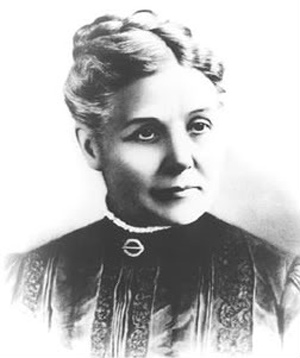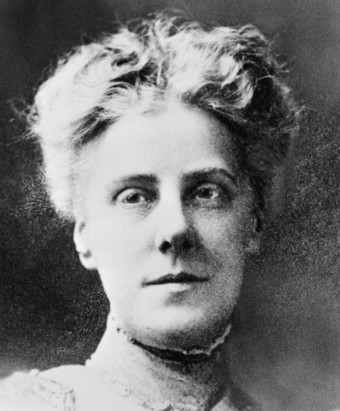The mother of Mother’s Day was a woman named Anna Jarvis, who, despite never becoming a mother, spent many years advocating for a national day for mothers because she felt they didn’t get enough recognition for all they did. Unfortunately, after she was successful in her campaign, Jarvis became so distraught by the commercialization of Mother’s Day that she eventually denounced the holiday and campaigned against it. Here’s the true story of Mother’s Day and how it became something that its original creator never intended.
Beyond the modern incarnation, the earliest instances of something like a Mother’s Day can be traced back to the ancient Egyptian celebration for the goddess Isis. Important to the Egyptians because of her connection to mourning and healing the sick, Isis was often shown as a mothering spirit and a role model for women. There were two celebrations associated with Isis, the largest of which took place for four days from October 31st through November 3rd. This festival’s highlight was a passion play showing how Isis brought her husband, Osiris, back from the dead.
While both the Greeks and Romans held festivals that celebrated their motherly goddesses, Rhea and Cybele, it is the Christian festival “Mothering Sunday” that’s more of a precedent to what we celebrate today. Taking place on the fourth Sunday of Lent (which falls in the month between Ash Wednesday and Easter), “Mothering Sunday” is still celebrated (mostly in the UK and parts of Europe) but, traditionally, has little to do with the American version “Mother’s Day.” Religious in nature, the holiday marks the day that people go to their “mother” church to worship, as opposed to their normal “daughter” church. The “mother” church is the largest in the area, the one that the smaller parishes spawned off of. Since this is often a day that the entire family gets together to attend the same church services, it has since become a day to celebrate mothers as well. It also became tradition for younger kids to pick wild flowers and give them to their mother on this day.
 If Anna Jarvis is considered the mother of American Mother’s Day, then Ann Maria Reeves Jarvis should be considered the grandmother. Anna Jarvis’ actual mother was a community leader in Barbour County, West Virginia and organized a series of “Mothers’ Day Work Clubs” across the county. Their aims were to raise money and help out mothers who could not afford medicine or medical attention for their families. Additionally, they inspected bottled milk and food for contamination at a time when the federal government didn’t do such things.
If Anna Jarvis is considered the mother of American Mother’s Day, then Ann Maria Reeves Jarvis should be considered the grandmother. Anna Jarvis’ actual mother was a community leader in Barbour County, West Virginia and organized a series of “Mothers’ Day Work Clubs” across the county. Their aims were to raise money and help out mothers who could not afford medicine or medical attention for their families. Additionally, they inspected bottled milk and food for contamination at a time when the federal government didn’t do such things.
When the Civil War commenced, Jarvis asked her club members to pledged neutrality in the conflict and helped soldiers from both sides take care of their families. After the war, in 1868, Jarvis organized “Mothers’ Friendship Day,” an event that brought together mothers from both the Confederate and Union sides to promote peace and reconciliation. Despite authorities thinking it would erupt in violence, it was a great success and was held for several years afterwards. The day also inspired famed women’s rights activist and composer of the “The Battle Hymn of the Republic” Julia Ward Howe to write the 1870 “Mother’s Day Proclamation, which called for women to take be more politically active in promoting peace and pacifism.
 Ann Maria Reeves Jarvis died in 1905, but her daughter took up the mantle of asking women to be more engaged in public affairs. Legend says that Anna Jarvis conceived the “Mother’s Day” holiday while at her mother’s funeral standing beside the open grave. Whether true or not, wanting a specific day to honor people like her mother – hard working, proud and rarely celebrated – she wrote thousands of letters to prominent Americans, including President Teddy Roosevelt and Mark Twain, asking for them to consider her idea.
Ann Maria Reeves Jarvis died in 1905, but her daughter took up the mantle of asking women to be more engaged in public affairs. Legend says that Anna Jarvis conceived the “Mother’s Day” holiday while at her mother’s funeral standing beside the open grave. Whether true or not, wanting a specific day to honor people like her mother – hard working, proud and rarely celebrated – she wrote thousands of letters to prominent Americans, including President Teddy Roosevelt and Mark Twain, asking for them to consider her idea.
Much like when the author of Mary Had a Little Lamb, Sarah Hale, before her did more or less the same in convincing Abraham Lincoln to establish a national day of Thanksgiving, it worked, with Twain’s support being printed in newspapers across the country; in 1908, Presidential candidate William Jennings Bryan also stated that he was “heartily in sympathy with the movement.”
The most avid supporter, however, was from former Postmaster General and department store mogul John Wanamaker. Not only was he vocal about his support for this day of remembrance, he also provided his store’s auditorium in Philadelphia as the site of the first “Mother’s Day” celebration on May 10, 1908. While the auditorium only sat five thousand people, fifteen thousand tried to gain admittance. Jarvis herself spoke for 70 minutes, talking about her mother and what we must do as a nation to remember all mothers. After her address, another speaker told Jarvis in front of thousands that, “Your Mother’s Day idea will honor you through ages to come.”
While the Senate initially rejected a resolution in 1908 concerning the proposed holiday, President Wilson officially signed legislation in 1914 declaring that the second Sunday in May would forever be the national holiday of “Mother’s Day.” Jarvis made the white carnation the official flower of the holiday she had championed, stating:
Its whiteness is to symbolize the truth, purity and broad-charity of mother love; its fragrance, her memory, and her prayers. The carnation does not drop its petals, but hugs them to its heart as it dies, and so, too, mothers hug their children to their hearts, their mother love never dying. When I selected this flower, I was remembering my mother’s bed of white pinks.
She also trademarked an official Mother’s Day seal and incorporated her “Mother’s Day International Association.” She even had a slogan – “in honor of the best mother who ever lived — your own.” Needless to say, she took Mother’s Day very seriously.
However, as the years passed, Jarvis started losing a grip on the holiday she invented. As happens to nearly every major holiday, flower, candy and greeting card companies began to realize the profit potential of Mother’s Day. Jarvis responded by denouncing any commercialization of Mother’s Day, thinking any attempt to make money off Mother’s Day – even if it was for a good cause – was wrong and not in the spirit of the thing. After all, something like a hand written note expressing your personal feelings is far superior than some store bought card. As she said,
A printed card means nothing except that you are too lazy to write to the woman who has done more for you than anyone in the world. And candy! You take a box to Mother—and then eat most of it yourself. A pretty sentiment.
At one point, she had nearly three dozen Mother’s Day-related lawsuits pending, including one against a nonprofit organization run by the First Lady Eleanor Roosevelt. Obviously confused and annoyed, Roosevelt told the New York Times that “I think (Jarvis) misunderstands us. She wanted Mother’s Day observed. We want it observed, are working for its observance and are really aiding her.”
Jarvis also went after the US Postal Service because they issued a Mother’s Day stamp featuring a white carnation, which she thought was a blatant advertisement for the floral industry.
Despite spending significant amounts of money campaigning against the commercialization of Mother’s Day in her later years, Jarvis was unable to stop it from becoming something she didn’t want. She subsequently went into reclusion in the final years of her life. In debt, angry and in failing health, she lived in a giant brick mansion in Philadelphia with her blind sister, Lillian. Outside the mansion was a sign alerting visitors “Warning — Stay Away.”
On November 24, 1948, Anna Marie Jarvis died at the age of 84.
Shortly before her death, a reporter paid Jarvis a visit, wanting to talk to her about the holiday she had invented. “She told with me with great bitterness,” the reporter said, “that she was sorry she had ever started Mother’s Day.”

















